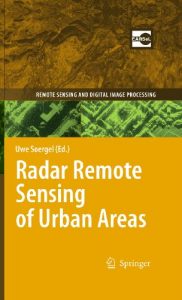One of the key milestones of radar remote sensing for civil applications was the launch of the European Remote Sensing Satellite 1 (ERS 1) in 1991. The platform carried a variety of sensors; the Synthetic Aperture Radar (SAR) is widely cons- ered to be the most important. This active sensing technique provides all-day and all-weather mapping capability of considerably ?ne spatial resolution. ERS 1 and its sister system ERS 2 (launch 1995) were primarily designed for ocean app- cations, but soon the focus of attention turned to onshore mapping. Examples for typical applications are land cover classi?cation also in tropical zones and mo- toring of glaciers or urban growth. In parallel, international Space Shuttle Missions dedicated to radar remote sensing were conducted starting already in the 1980s. The most prominent were the SIR-C/X-SAR mission focussing on the investigation of multi-frequency and multi-polarization SAR data and the famous Shuttle Radar Topography Mission (SRTM). Data acquired during the latter enabled to derive a DEM of almost global coverage by means of SAR Interferometry. It is indispe- ableeventodayandformanyregionsthebestelevationmodelavailable. Differential SAR Interferometry based on time series of imagery of the ERS satellites and their successor Envisat became an important and unique technique for surface defor- tion monitoring. The spatial resolution of those devices is in the order of some tens of meters.
This site is safe
You are at a security, SSL-enabled, site. All our eBooks sources are constantly verified.






